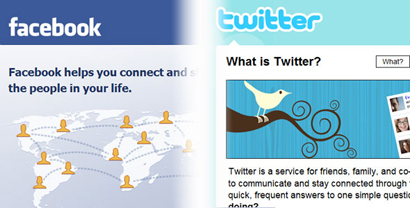
The first time I heard the saying “How you do one thing is how you do everything” I didn’t get it. (Actually I think my exact response was: “Yeah, yeah, yeah.”)
However, as I continued to work on myself and my business over the years, this statement has finally sunk in. And now I see how it relates to pretty much everything in my life. (After all, the state of your business is just a representative of what’s going on in your head at any given moment.)
So, what does any of this have to do with social networking? Well, it occurred to me as I look around at what people are and aren’t doing with their social networking that this is a microcosm of your entire business.
Let me explain. How do you approach your social networking?
* Are you someone who set up a bunch of social networking accounts months ago and haven’t touched it since? Where else has this shown up in your business? Are you someone who has a bunch of half-finished information products or books sitting on your desk?
Or maybe you finished them but you haven’t put up the sales letter or did any other marketing so you’re not actually making any money off of them.
Needless to say, with this habit, you’ve simply wasted a bunch of time without anything to show for it. You’re not making any money with your social networking nor are you making any money selling products.
* Are you someone who does your social networking in bursts? You ignore it for weeks, then for a couple of days you’re on it in a frenzy, only to go back to ignoring it. (Or you only jump on and do anything on it when you’re feeling stressed about cash flow and lack of clients.)
So where else does this show up in your business? Are you someone who sends out an email newsletter once in a blue moon? Or you only pick up the phone to follow up when you’re desperate for new clients?
With this habit, while it’s good you’re doing something, you’re only going to see consistent results when you’re consistently doing your marketing tasks. Communicating with people once in a while and/or only when you’re looking for something (i.e. for them to give you money) is an excellent way to have a feast-or-famine business model.
* Are you someone who is pretty good on one social networking platform but doesn’t do anything on any other one? For instance, you love Facebook but your Twitter account sits there unloved and you pretty much never update your blog, never mind anything else.
So where else does this show up in your business? Are you someone who’s really good at going to live networking events and collecting business cards but doesn’t follow up? Or maybe you send out an email newsletter fairly regularly but you don’t do anything else with the articles you write for your newsletter (although you keep meaning to). And you don’t use any other methods to touch your prospects (i.e. direct mail or teleclasses.) You’re getting part of it right but if you followed an entire system you would see far more results. (And, in many cases, it’s not about YOU doing more but simply having a system and a team in place to support you so you get the biggest bang for your marketing time.)
Now, this isn’t about making you feel bad about what you are or aren’t doing. This is about looking at one piece of your business and using what you see there to make your whole business more successful.



